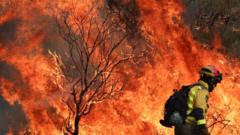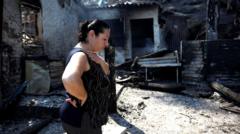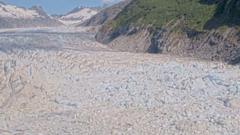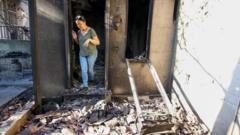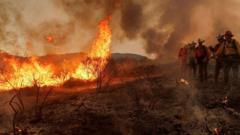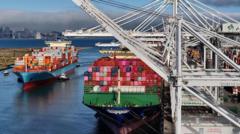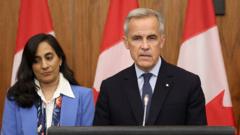A state of emergency has been declared in Newfoundland and Labrador due to uncontrolled wildfires fueling evacuations and safety measures throughout Eastern Canada. Conditions remain dire amid ongoing heat and dry weather, raising alarm as communities brace for the continuing wildfire threat.
Wildfires Rage Across Eastern Canada as Evacuations Intensify

Wildfires Rage Across Eastern Canada as Evacuations Intensify
Thousands are displaced as Canada faces its second-worst wildfire season, with widespread fires igniting concerns from British Columbia to Newfoundland.
Canada is currently grappling with one of its most severe wildfire seasons ever, prompting evacuation orders across Eastern provinces. More than 700 active fires are reported nationwide, with particularly aggressive blazes threatening communities in Newfoundland and Labrador.
Mandatory evacuation protocols were issued as fast-spreading fires impede safety and pose growing challenges for firefighting efforts. According to the Canadian Interagency Forest Fire Center, approximately 18.5 million acres of forest have already succumbed to flames this year, making it the second most catastrophic wildfire season on record, following last year's devastating total of 31.3 million acres by mid-summer.
Despite the lower acreage affected compared to last year, the fire season shows no signs of abating, with potential for continued fires well into fall. The unprecedented situation is compounded by persistent heat and drought conditions that have gripped much of the region, exhausting vegetation and making it highly flammable.
This year, the provinces of Saskatchewan and Manitoba have reported the most significant wildfires. The Shoe fire in Saskatchewan, the largest of the season, has burned approximately 1.4 million acres, surpassing the size of Arizona's iconic Grand Canyon National Park.
The recent rains in the western provinces bring some respite, reducing the likelihood of new fires igniting and mitigating the explosive growth of existing ones. However, the eastern provinces, mainly Newfoundland and Labrador, face unique challenges, experiencing atypical high temperatures and dry weather.
Numerous fires are currently classified as out of control, prompting a state of emergency and heat warnings. Areas near St. John’s, the capital of Newfoundland, particularly highlight the alarming conditions, where urban development intersects dangerously with wildfire-prone areas.
Enhanced firefighting measures have been implemented, including a ban on outdoor burning and new restrictions on the use of off-road vehicles on forested lands, as officials take precautions against fire spread. John Hogan, the premier of Newfoundland and Labrador, emphasized the need for community vigilance and cooperation during this critical period.
While the province of Quebec appears to have been spared from extensive wildfires this year, following devastating impacts in 2023, the situation remains tenuous as more than a dozen other regions confront the grim reality of an ongoing wildfire threat. As conditions remain volatile, further updates are anticipated, highlighting the evolving landscape of Canada’s wildfire fight.


